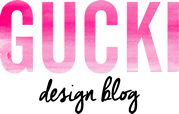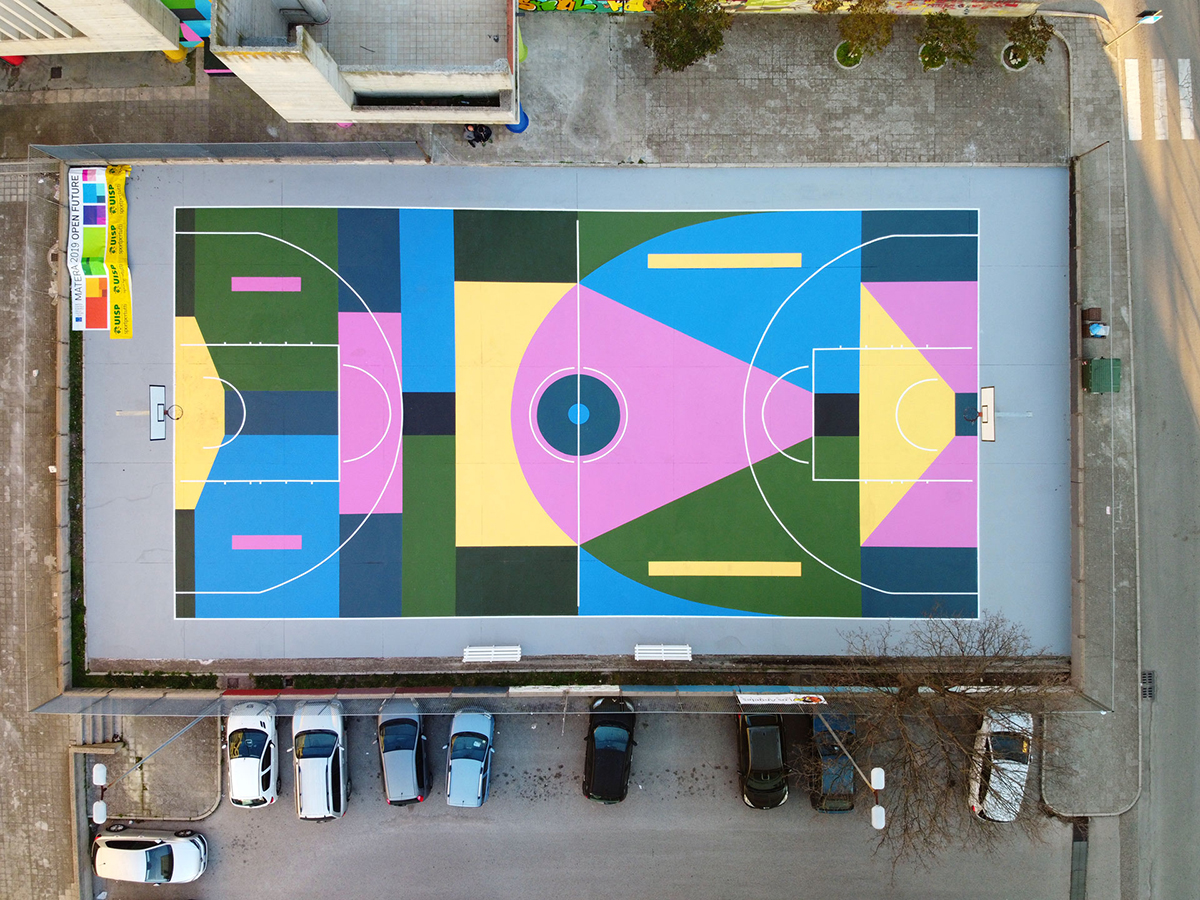Leggi questo post in Italiano
Street art is the art that takes place in public places. Always present on the city walls, since the 70s with American graffiti and then in the 80s with artists like Keith Haring, street art has entered our imagination and it was brought from the street into the art galleries of New York.
Murals and graffiti are able to transform the appearance of cities and today they are conceived as true site-specific works of art capable of revitalizing the urban territory.
Figurative, geometric, colorful, murals today are the connecting element between art, design, and communication.
Nico Skolp, Nicolò Loprieno, is a street artist and designer made in Apulia. If you are familiar with Instagram, you have certainly seen the colorful basketball court he made in Matera. “Let’s Play Culture” is an urban work of art Nico Skolp created in collaboration with the German artist Quapos. It was opened last January. It’s much more than just a basketball court, it is an urban work of art that transforms, thanks to shapes and colors, a popular area a few steps from the heart of Matera, it brings beauty, used the language of design to communicate with sports language.
More and more often art meets sport on a basketball court. Here you can find the blog post I wrote on the basketball court in Paris, the most famous on Instagram, and here the initiative of the Project Backboard association which in the United States transforms old basketball courts into works of art thanks to the collaboration with various artists.
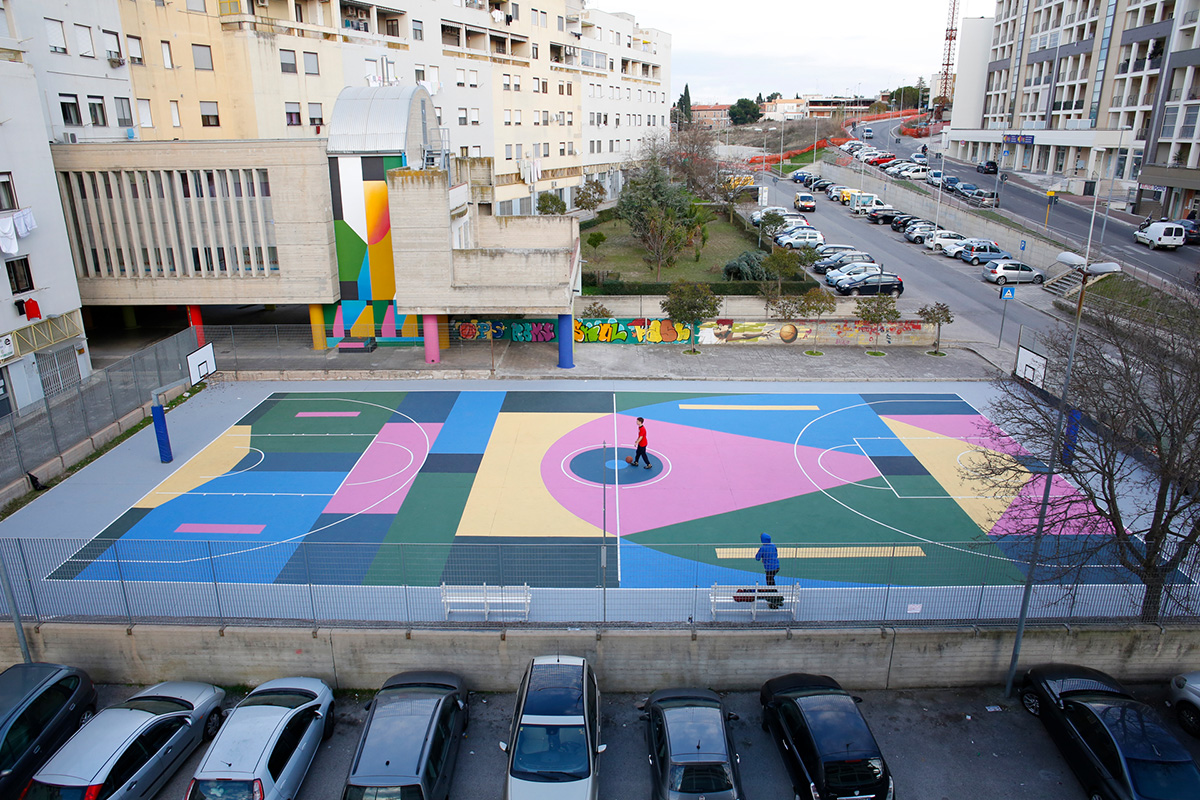
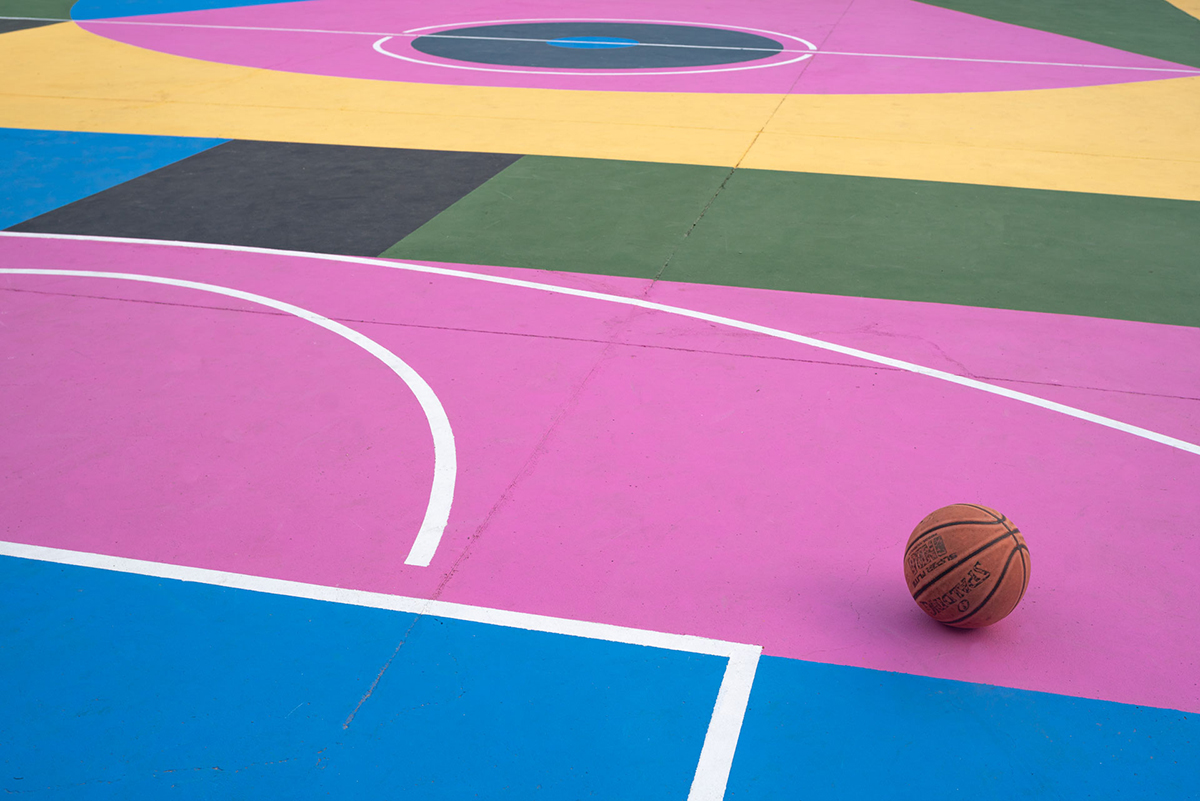

Nico Skolp (1983) is from Bari, since 2015 he has been one of the protagonists of the Matera street art scene together with other street artists in the creation of numerous urban interventions.
I met Nico Skolp on Instagram and we transformed our little chat into a small interview. I asked him how important is that a work of art is also instagrammable, how street art is perceived today, how colors can change space, and much more. Find everything here, even the story about his software that creates infinite and colorful compositions.
Q. How can art transform public space?
A. Art has a responsibility, it can enhance a space, but in the absence of a project, it can do a lot of damage. In general, I do not consider myself as an artist, nor do I consider my works as art, but I think of them more as design projects. I feel much closer to the world of visual communication in relation to architecture than to art. This is why a basketball court painted in this way is not only aesthetically interesting but becomes functional.
Q. What do you think of the instagrammability of art?
A. It is now essential if you want to communicate your work, but it makes everything very superficial and exposed to the distracted judgment of a thumb while you’re scrolling your feed.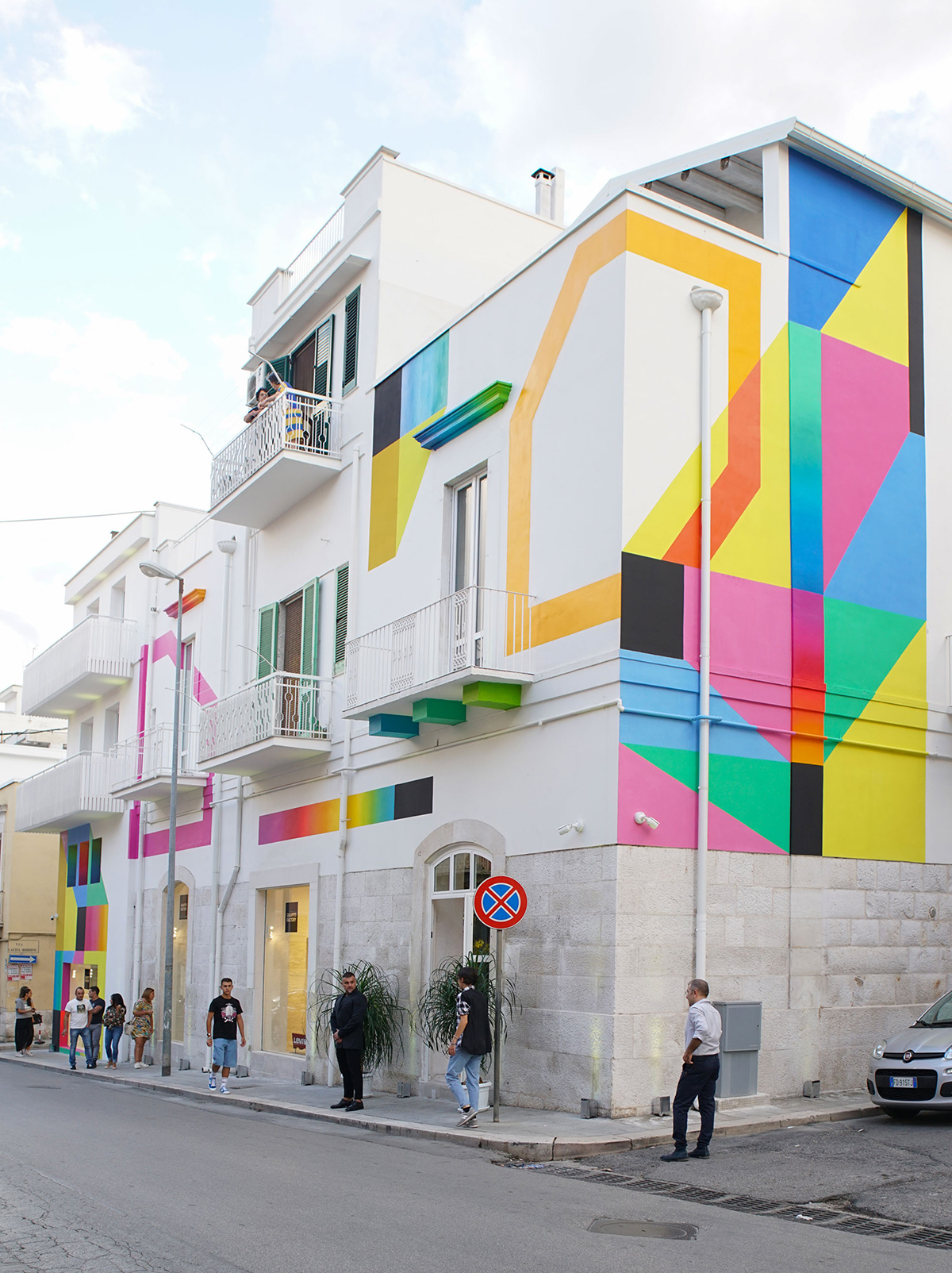
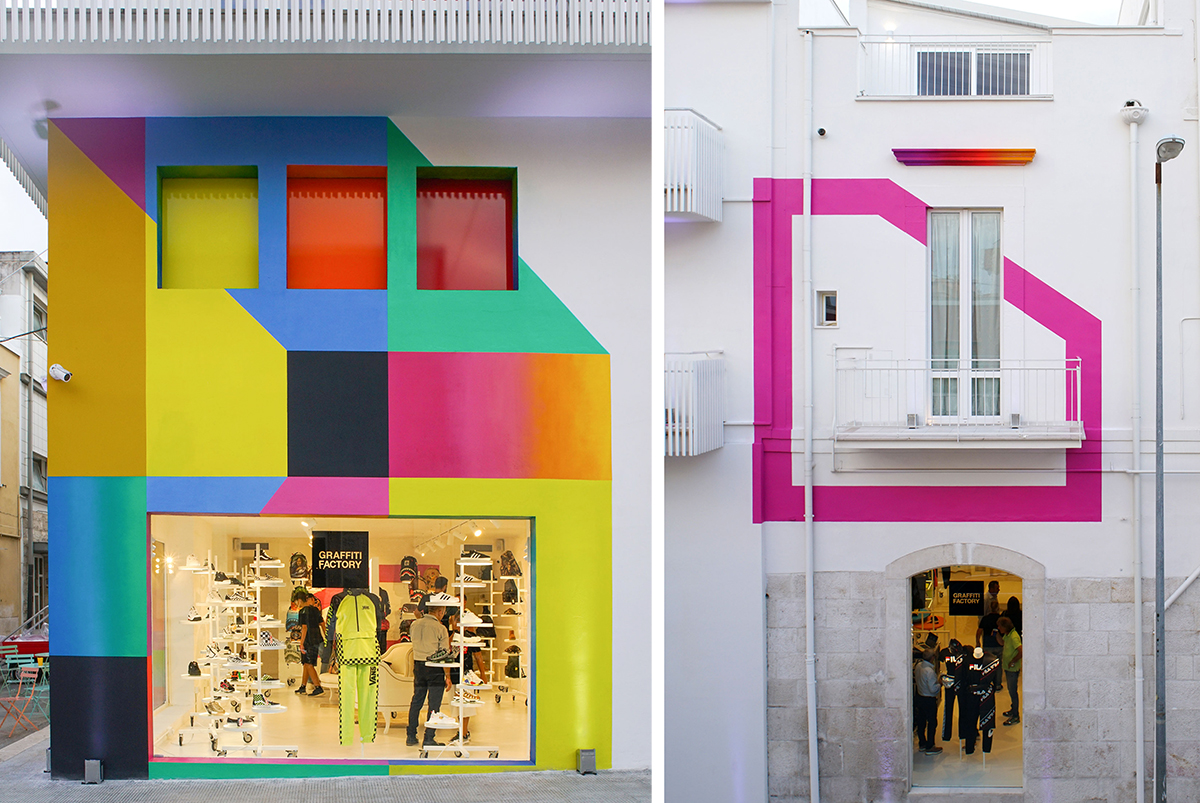
Q. How can color change the perception of space?
A. Space itself is colorful, we are constantly overexposed to visual inputs, good inputs like those from nature, and other much more controversial like advertising. Art can fill us with joy and serenity as nature does. Recently a person on Instagram commented on a work of mine after having a bad day writing “I was very angry …but then… here it is… there is neither misery nor miserable that beauty cannot take care of ”, I was impressed by this message.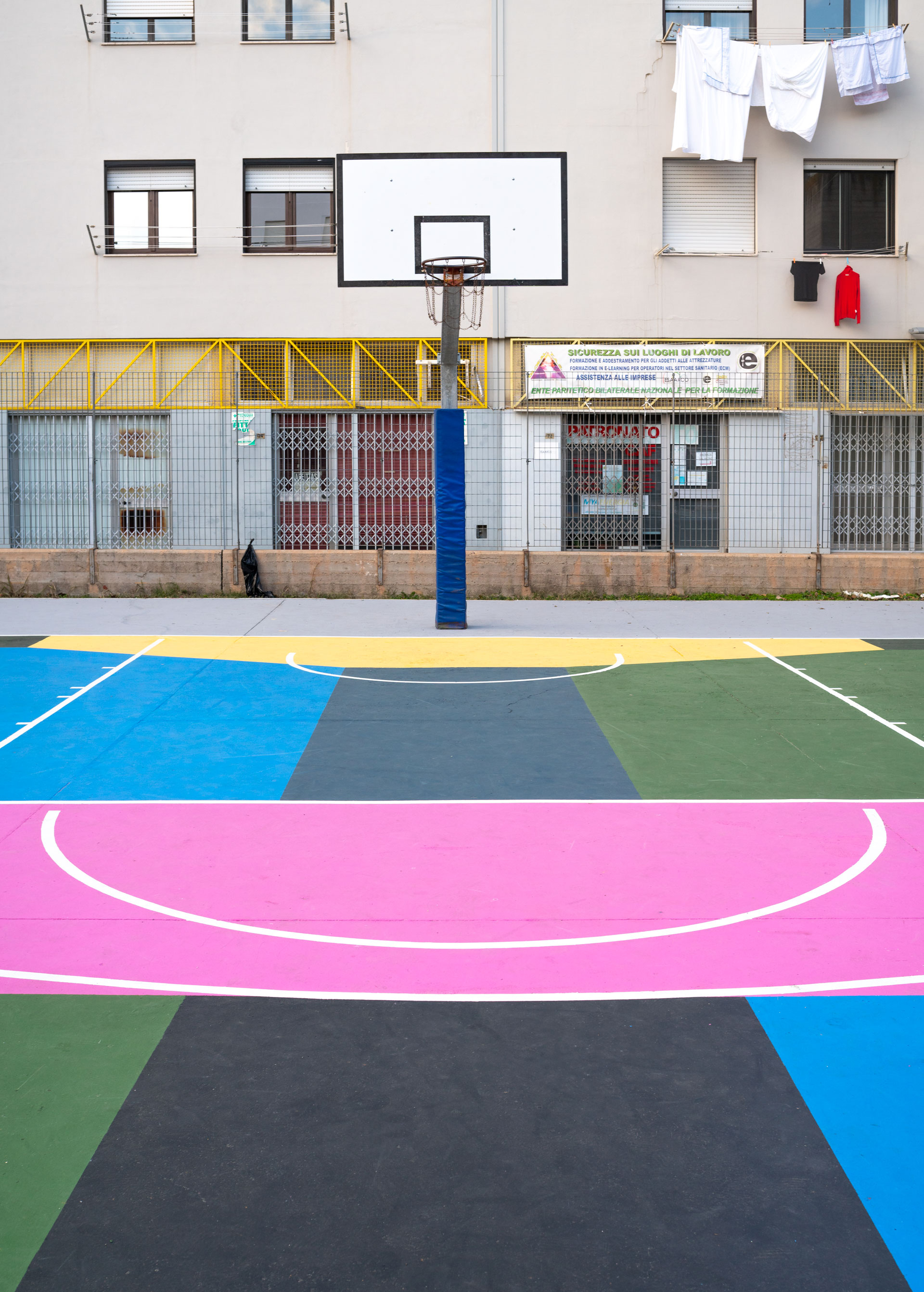
Q. How do your works affect people? How are they accepted?
A. My goal is to surprise people, if a person stops in front of one of my works to reflect on what he sees, for me it is a great result, but it is even greater when people remain dazed or don’t immediately understand what they are looking at. We are too used to receiving visual inputs (often commercial) that are easy to understand, which is why I prefer to use abstract signs.
Q. It is interesting how graffiti and street art today are used as decorations, how has changed the perception of urban art?
A. It is a political issue. They realized that this kind of operations have success. If before graffiti were perceived only as vandalism, today we begin to understand their potential, and therefore to consider murals as art.
Q. How do you choose the colors for your murals?
A. I try to relate to the space surrounding the work and look for the right composition and chromatic balance. The work is not by itself but it must respect and blend with its surroundings, it enters an environment as a guest and then becomes part of it.
Q. How did you go from lettering to geometric patterns?
A. I have always been typography and illustrated lettering lover, but I have never really been interested in the message, so from the letters I tried to use just their shapes and compositions trying to go down the abstract and color path.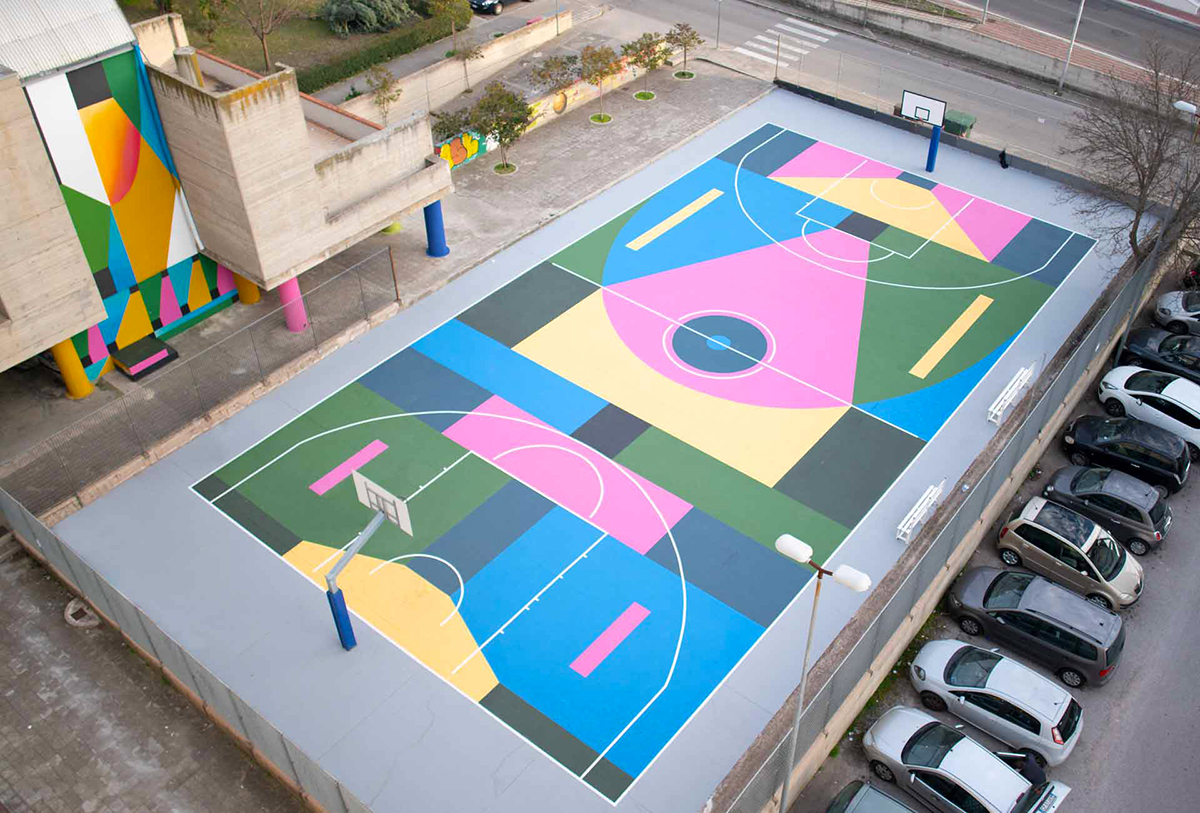

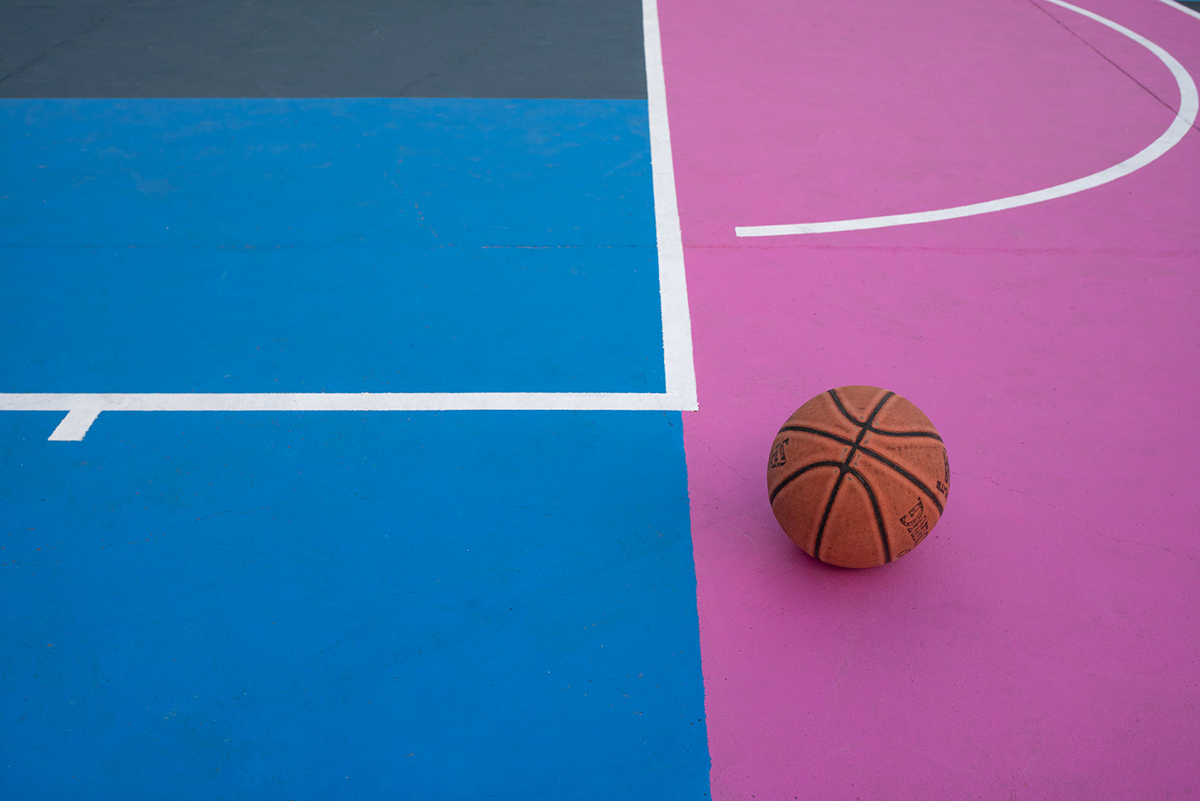
Q. I read that you have developed a software that creates compositions, can you tell me how it works?
A. Yes, it is open-source software for everyone, designed by me and developed by a friend-colleague of mine, Piero Molino, currently a researcher in Uber in California. It creates abstract forms based on the rules that generate my compositions. It allows you to create infinite digital works, it is a project that we can call “generative design”.
Q. Are you planning other “maxi” projects?
A. There are other projects in the pipeline but the critical historical moment due to the Corona Virus is slowing everything down, in the meantime, I am painting on other supports waiting to be able to return to the street. Let’s say it, everything will be fine!
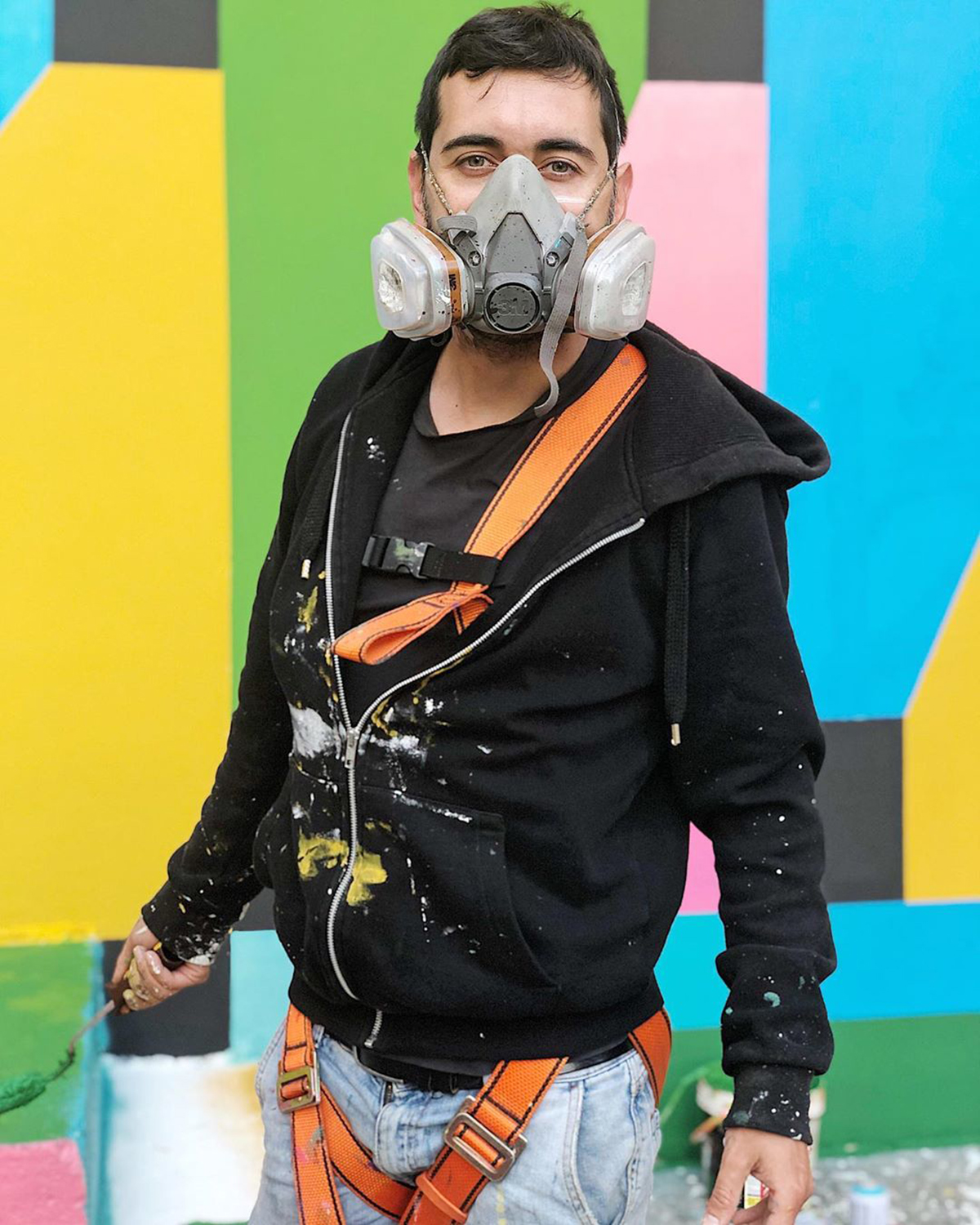
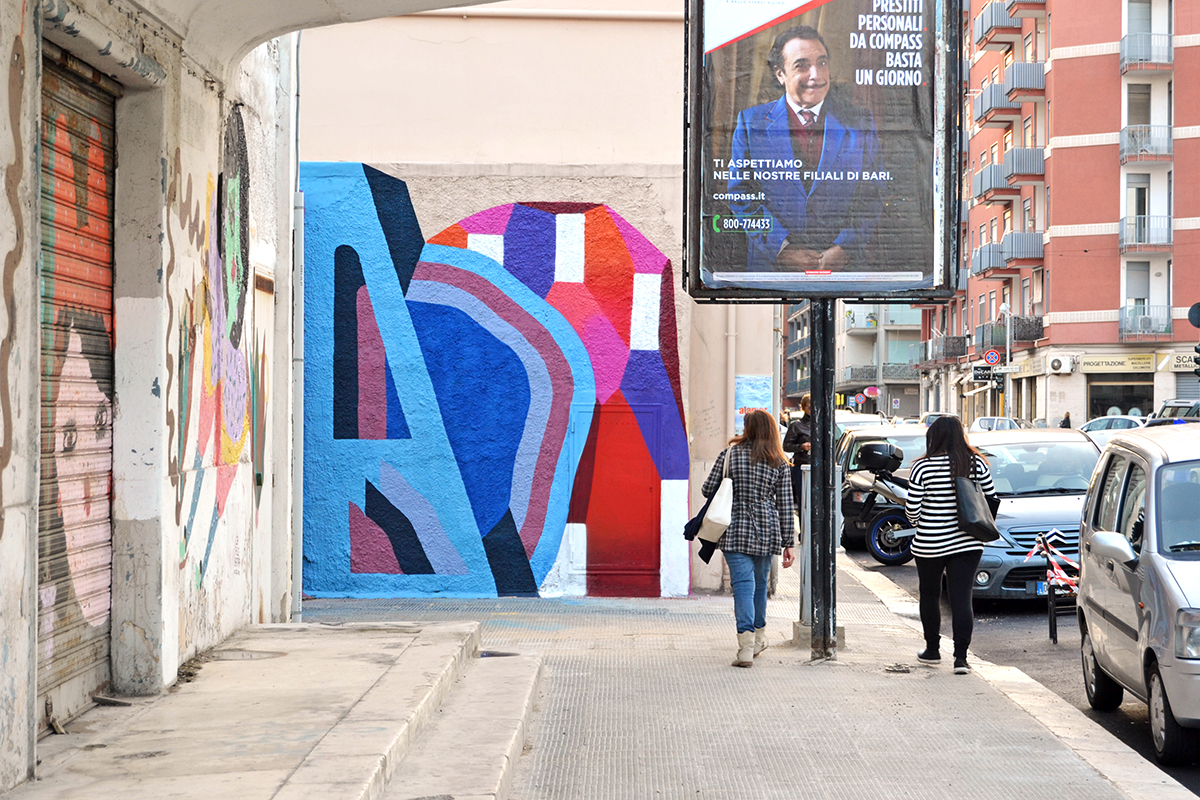
Photos © Nico Skolp – Instagram @nicoskolp
